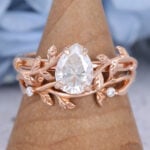Does Moissanite Scratch Easily Over Time? How to Keep It Sparkling Like New
Over time, most of gemstones can show signs of wear, leaving many wondering how well moissanite holds up in everyday life. The question does moissanite scratch often comes up among jewelry buyers who admire the gem’s brilliance. Understanding how a moissanite stone reacts to daily contact and what affects its shine is key to keeping it looking as radiant as the day it was bought.
Definition and Hardness of Moissanite
Moissanite is a naturally occurring silicon carbide mineral with an exceptionally strong three-dimensional crystal lattice, giving it remarkable stability and durability. Although most moissanite on the market today is lab-created, it retains all the same physical properties as natural moissanite and closely resembles a diamond in appearance, with a high refractive index and exceptional fire. Additionally, the moissanite hardness rating on the Mohs scale is approximately 9.25, just below diamond (10), making it extremely hard and scratch-resistant. This combination of durability, brilliance, and diamond-like sparkle makes moissanite a popular diamond alternative for engagement rings, wedding bands, and other fine jewelry.
Does Moissanite Scratch Over Time?
A common question among jewelry buyers is does moissanite scratch over time? Thanks to its impressive moissanite durability, real moissanite stone is highly resistant to scratches from everyday wear. While no gemstone is completely impervious to extreme forces, under normal conditions, moissanite retains its brilliance and polished surface, keeping jewelry looking nearly new for years. Its strong crystal structure also helps prevent chipping or damage during daily activities, making it a practical choice for those who wear their rings constantly. With proper care, moissanite can maintain its fire and sparkle for decades, offering both beauty and long-lasting performance.
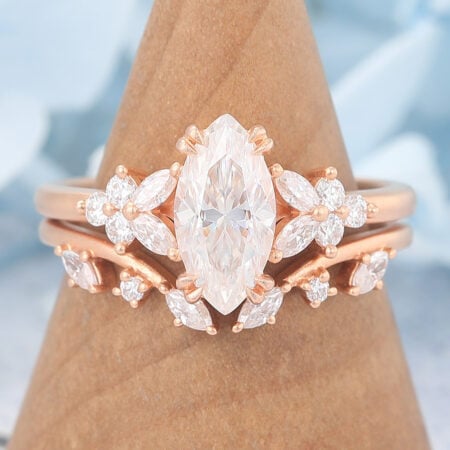
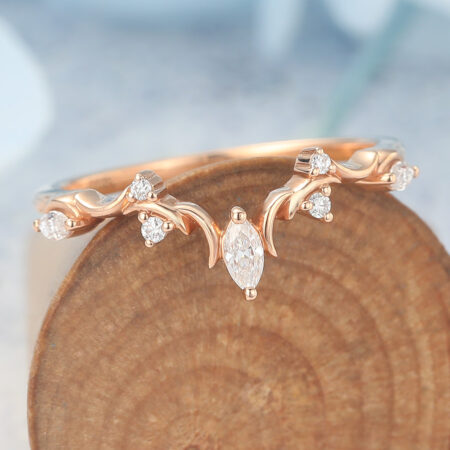
What Can Scratch Moissanite?
Although moissanite is extremely hard, it is not completely indestructible. Only materials with equal or greater hardness, such as diamonds, tungsten carbide, or another moissanite stone, can leave scratches on its surface. Everyday objects like keys, coins, or metal tools generally will not harm moissanite. In other words, scratches on moissanite usually occur only when it comes into contact with harder materials.
Comparing Scratch Resistance: Moissanite vs Other Gemstones
Moissanite vs Real Natural Diamond
When you compare moissanite to diamond, diamond is slightly harder, ranking 10 on the Mohs scale, while the moissanite gemstone scores around 9.25. This means that diamond can scratch moissanite, but moissanite cannot scratch diamond. Because of this difference, moissanite is more prone to minor scratches when exposed to harder materials. Despite that, moissanite remains extremely durable and highly resistant to daily wear. Instances of moissanite scratch are still rare under normal conditions, making it a practical alternative for those seeking brilliance similar to diamond without compromising toughness.
Moissanite vs Lab Diamond
In a moissanite and diamond comparison, both gemstones are extremely hard and durable, with lab diamonds sharing the same properties and hardness as natural diamonds. Diamond can scratch moissanite, but moissanite cannot scratch diamond. However, moissanite still maintains its sparkle and polished surface over years of regular use, making it an excellent choice for engagement rings, especially for those seeking affordable moissanite engagement rings.
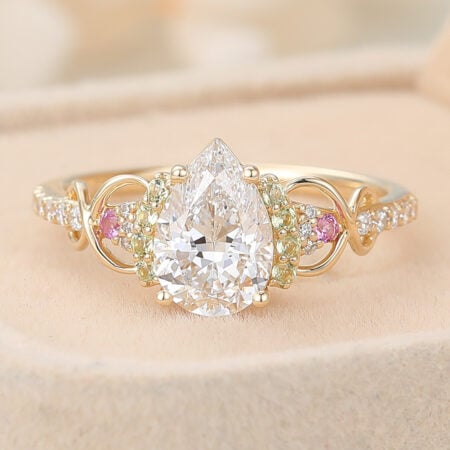
Moissanite vs Cubic Zirconia
When comparing moissanite to cubic zirconia (cz), the difference in durability and brilliance becomes clear. Moissanite properties include exceptional hardness, with a Mohs rating of 9.25, while cubic zirconia ranks only around 8, making it more prone to scratches and cloudiness over time. Moissanite also has a higher refractive index, giving it more fire and brilliance that lasts for years. In short, moissanite maintains its clarity and sparkle far longer.
Moissanite vs White Sapphire
White sapphire offers a clean and elegant look, but its durability is slightly lower compared to moissanite. With a hardness of about 9 on the Mohs scale, it can resist daily wear yet is more likely to develop fine scratches over time. Moissanite, on the other hand, ranks around 9.25, giving it a tougher surface that better maintains its polish. Also, because of its stable crystal structure, moissanite tends to preserve its clarity and brilliance longer.
Why Moissanite Might Look Scratched (But Isn’t)
Sometimes moissanite may appear scratched or cloudy, but this is often not actual damage to the stone. This visual dullness, often described as moissanite clouding, usually comes from dirt, oil, or residue buildup on the surface, which can dull its sparkle and mimic the look of scratches. In most cases, a gentle cleaning with warm water, mild soap, and a soft brush restores its brilliance instantly. Because of its strong atomic structure and impressive hardness, real moissanite rarely suffers true surface scratches even after years of wear.
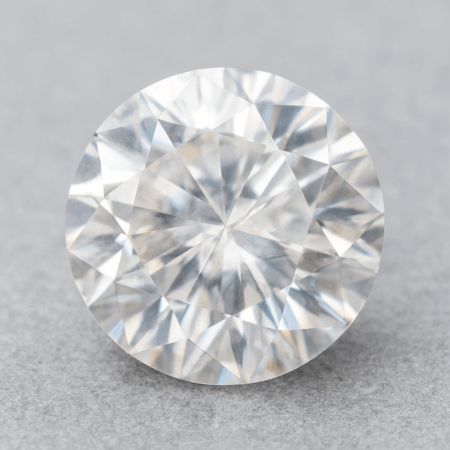
How to Keep Moissanite Sparkling Like New?
Keeping moissanite sparkling like new doesn’t require complicated routines. Rinsing it under warm running water after meals can remove oils and tiny food particles before they build up. Gently wiping the stone with a microfiber cloth after wearing prevents dust and fingerprints from dulling its shine. For deeper cleaning, soaking moissanite briefly in a mixture of warm water and mild dish soap, then brushing lightly with a soft toothbrush, restores its brilliance without harsh chemicals. Storing the moissanite jewelry in a separate fabric-lined box or pouch keeps it safe from scratches while not in use. With these simple habits, your moissanite will continue to sparkle for years.
Is Moissanite a Long-Lasting Choice for Everyday Wear?
Moissanite is an excellent choice for everyday wear due to its toughness and stable crystal structure. It resists scratches from most daily activities and maintains its polished surface over time. The stone also resists chipping, and its brilliance remains consistent even with frequent handling. These qualities make moissanite particularly well-suited for jewelry that is worn daily.
Conclusion
In conclusion, moissanite is a durable and beautiful gemstone ideal for everyday wear. For those wondering does moissanite scratch, the answer is that it rarely does under normal conditions thanks to its tough, stable crystal structure. With simple care like regular cleaning and careful storage, moissanite maintains its brilliance for years.
FAQs About Does Moissanite Scratch
Is moissanite a real diamond?
No, moissanite is a distinct gemstone made of silicon carbide, not carbon like a diamond, though it closely resembles diamonds in appearance.
Will moissanite scratch?
Moissanite is highly resistant to scratches. It only gets scratched by harder materials such as diamonds or tungsten.
How hard is moissanite?
Moissanite ranks about 9.25 on the Mohs scale, making it extremely hard and durable for everyday wear.
Is moissanite durable?
Yes, moissanite is tough and stable, resisting scratches, chips, and general wear over time.
Is moissanite better than diamond? Why is moissanite better than diamond?
Moissanite is not harder than diamond, but it offers exceptional brilliance, affordability, and eco-friendliness, making it a practical alternative for engagement rings and jewelry.
Can moissanite be scratched by metal objects?
Most common metals, such as gold, silver, or stainless steel, will not scratch moissanite. Only harder gemstones or materials can leave marks.
How can I prevent moissanite from looking scratched?
Regular cleaning and proper storage prevent dirt or residue buildup that can mimic scratches. Avoid contact with extremely hard materials.



